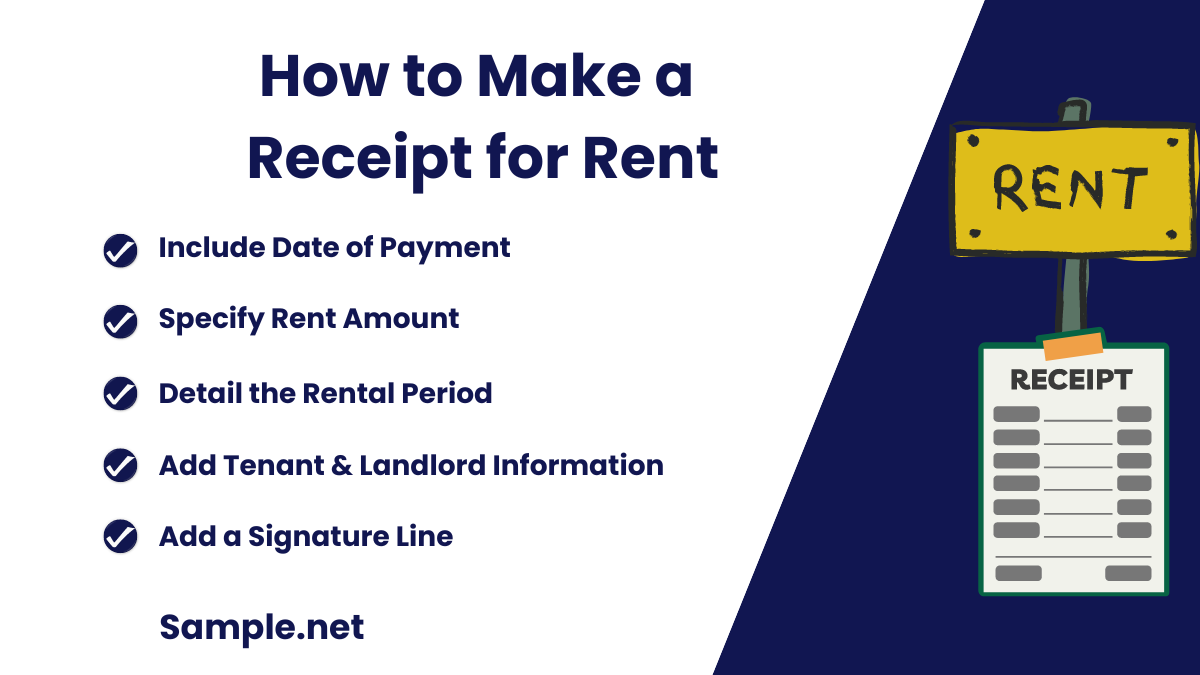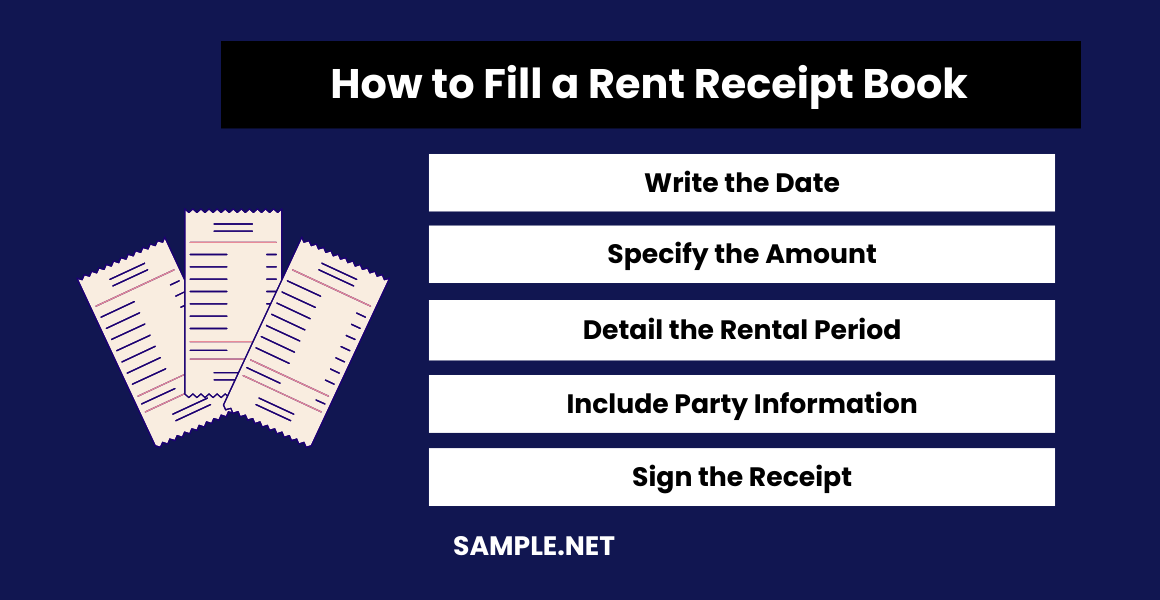Rent Receipt Samples
-
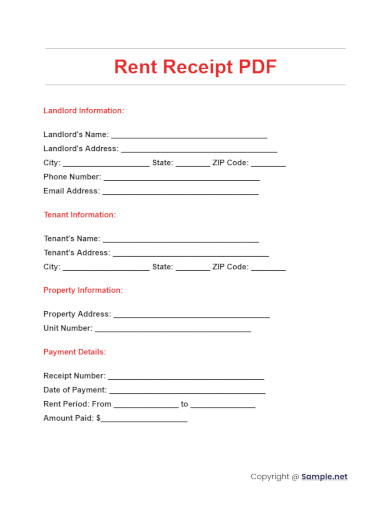
Rent Receipt PDF
download now -
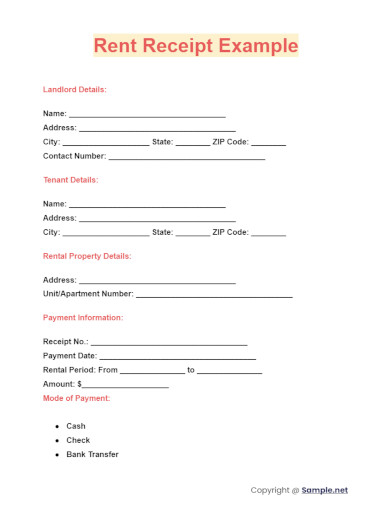
Rent Receipt Example
download now -
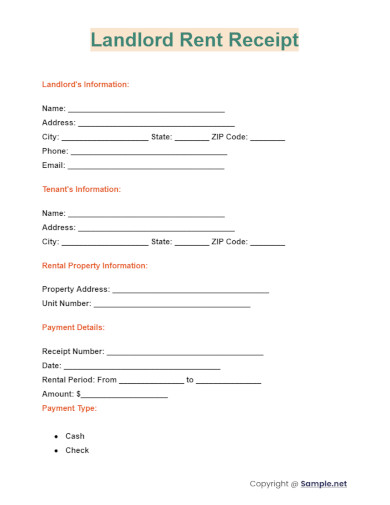
Landlord Rent Receipt
download now -
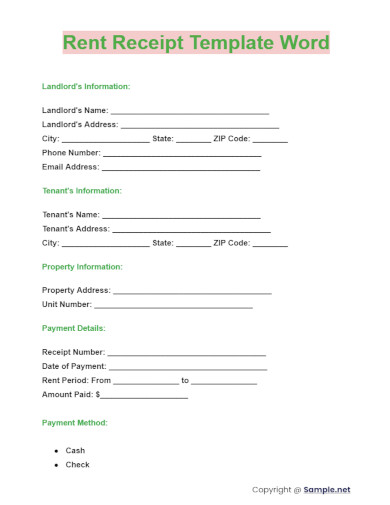
Rent Receipt Template Word
download now -
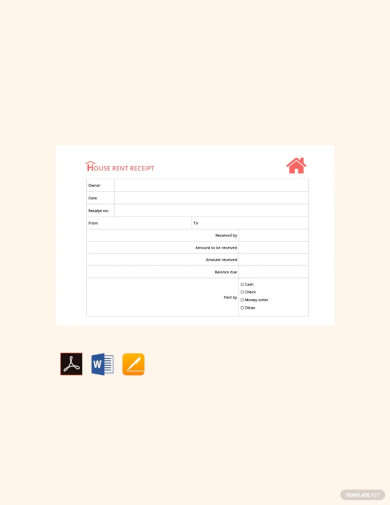
Rent Receipt Template
download now -
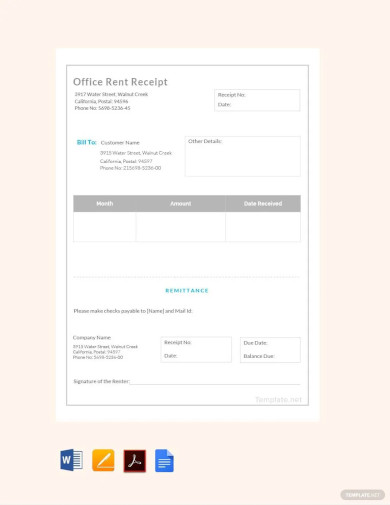
Simple Office Rent Receipt Sample Template
download now -
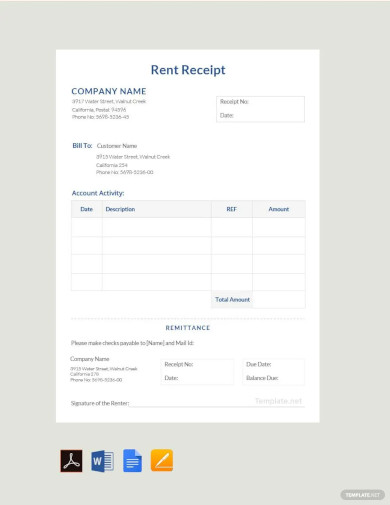
Rent Receipt Format Template
download now -
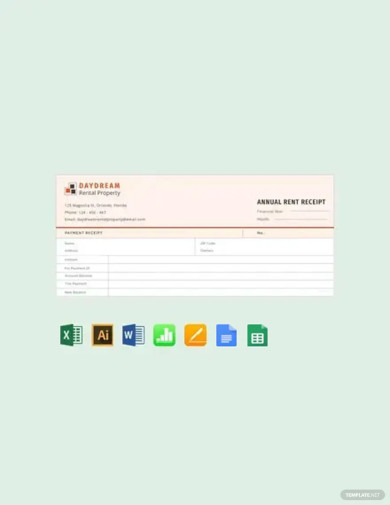
Annual Rent Receipt Template
download now -
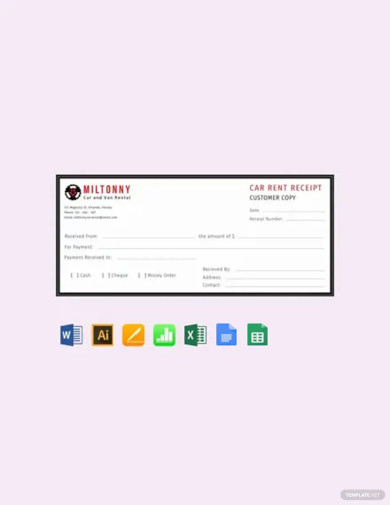
Car Rent Receipt Template
download now -
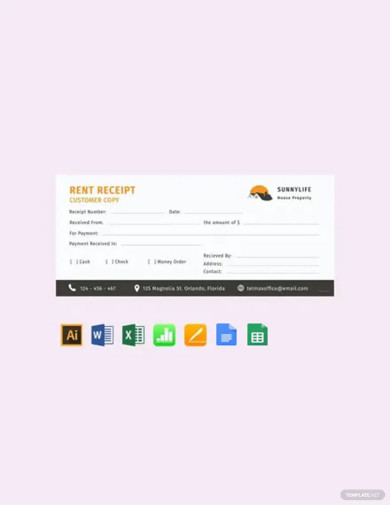
Editable House Rent Receipt Template
download now -
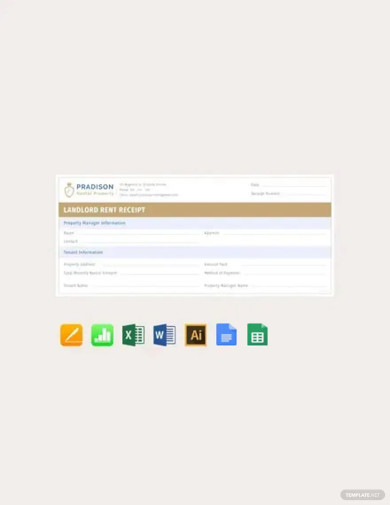
Landlord Rent Receipt Template
download now -
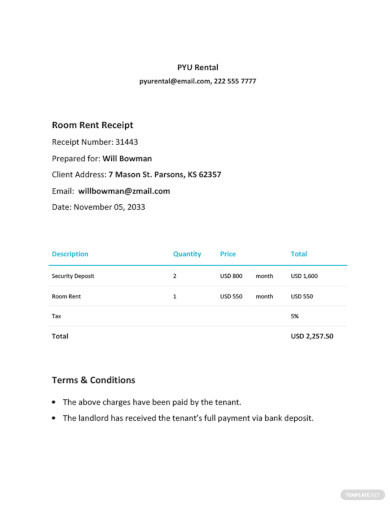
Room Rent Receipt Template
download now -
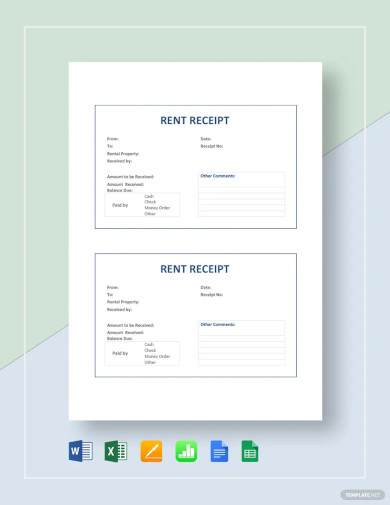
Printable Rent Receipt Template
download now -
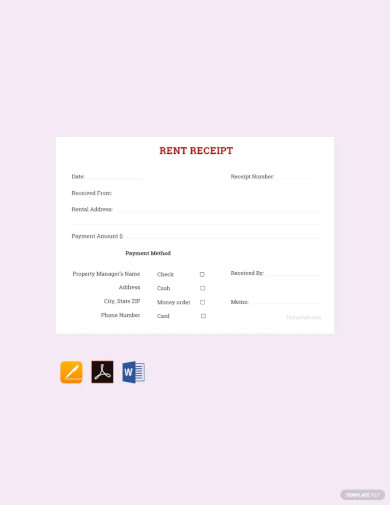
Blank Rent Receipt Template
download now -

Monthly House Rent Receipt Template
download now -
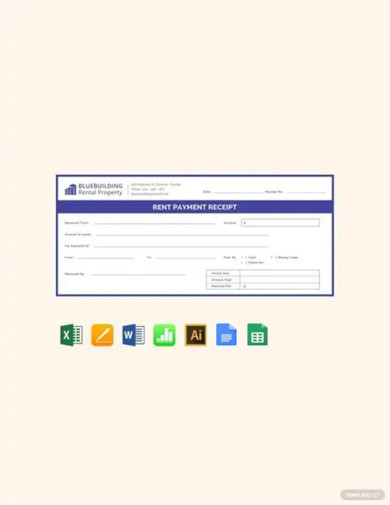
Rent Payment Receipt Template
download now -
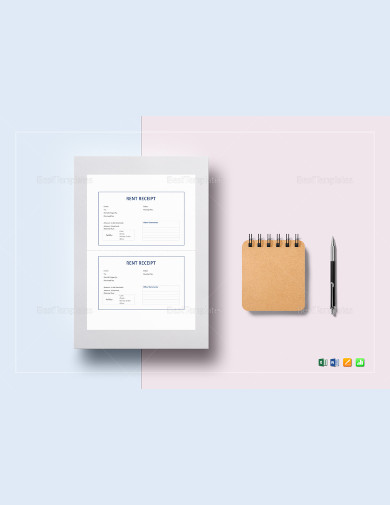
Simple Rent Receipt Template
download now -
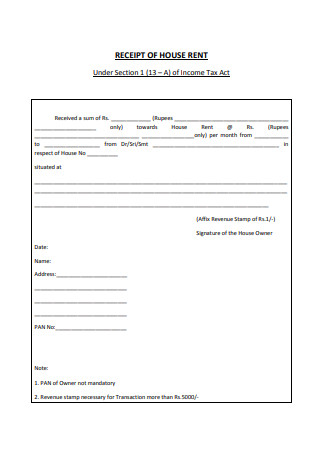
Receipt of House Rent
download now -
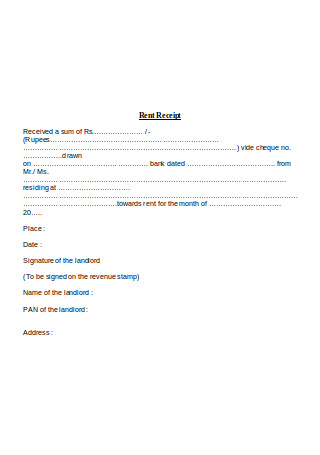
Sample Rent Receipt
download now -

House Rent Receipt
download now -
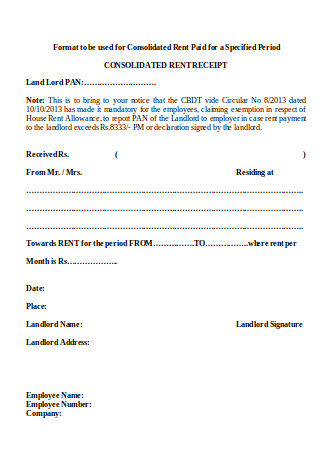
Sample Fillable Rent Receipt
download now -
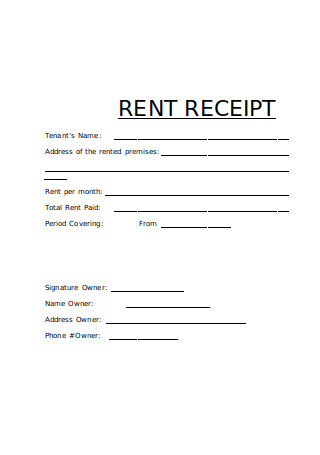
Editable Rent Receipt
download now -
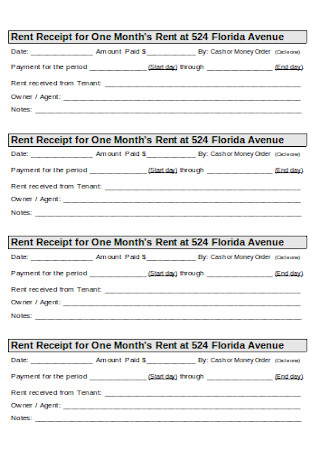
Rent Receipt for One Months Rent
download now -

Printable Receipt of House Rent
download now -
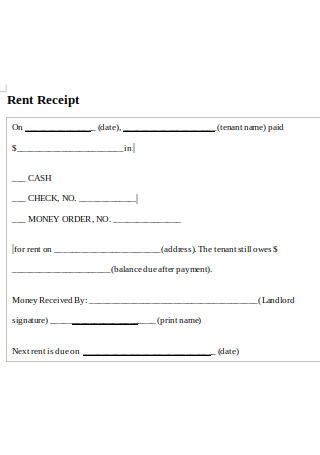
Rent Received Receipt Form
download now -

Rent Payment Receipt
download now -

Sample Rent Receipt in DOC
download now -
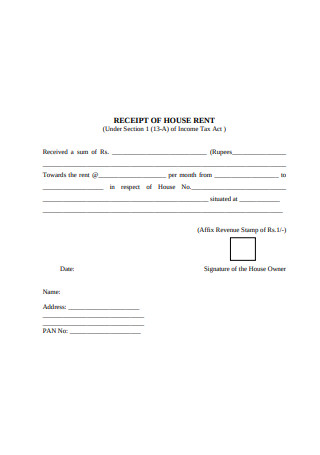
Basic Receipt of House Rent
download now -
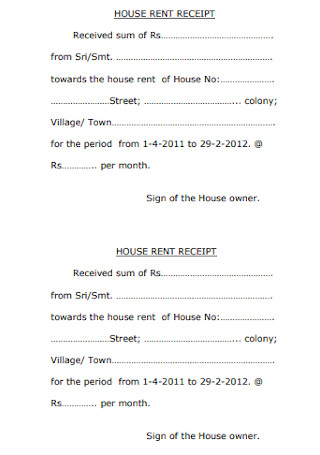
Sample House Rent Receipt
download now -
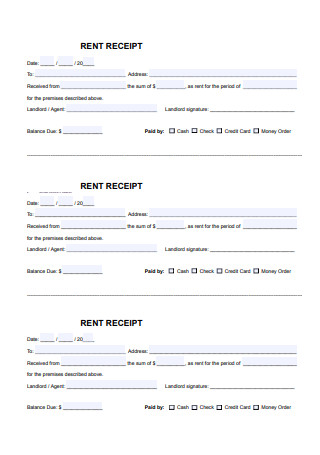
Standard Rental Receipt
download now -
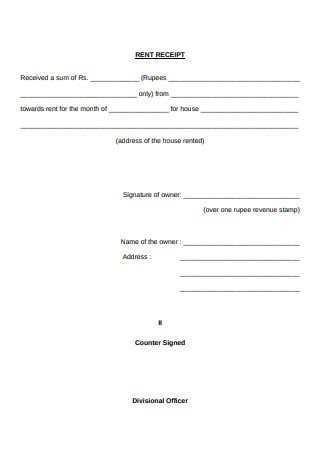
Yearly Rent Receipt Form
download now -
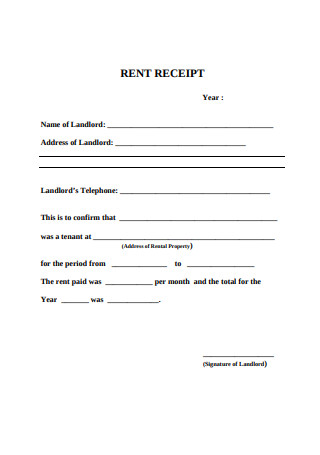
Annual Rent Receipt
download now -
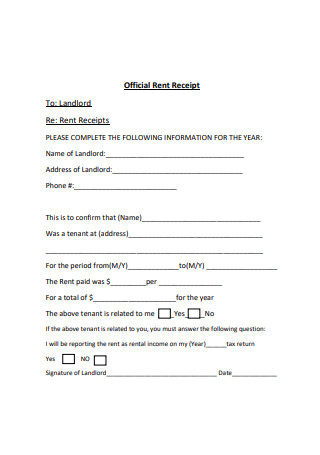
Legal Rental Receipt
download now -
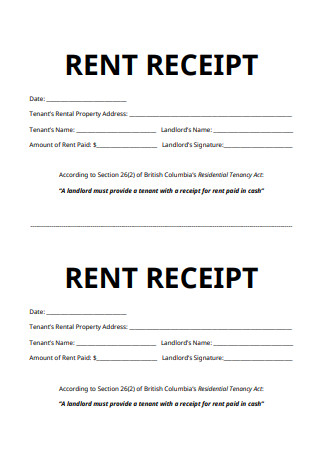
Residential Rent Receipt
download now -

Sample Rent Receipt Payment
download now -

Editable Rent Receipt
download now -
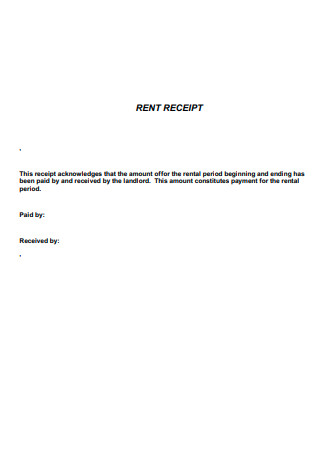
Sample Shop Rent Receipt
download now -
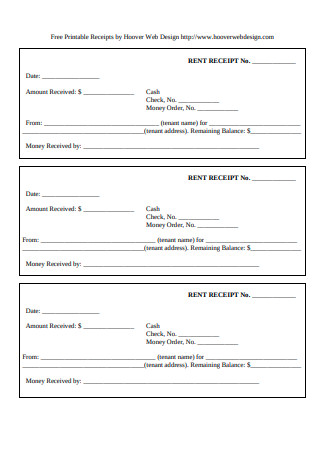
Printable Receipt for Rent Payment
download now -

Rent Receipt Template
download now -
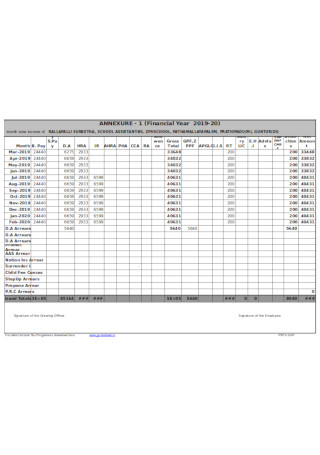
Sample Rental Financial Receipt
download now
FREE Rent Receipt s to Download
Rent Receipt Format
Rent Receipt Samples
What Is a Rent Receipt?
The Elements of a Rent Receipt
How to Write a Rent Receipt
The Dos and Don’ts of a Rent Receipt
How do I make a receipt for rent?
How to write a rent receipt for tenant pdf?
Does a landlord have to give rent receipts in California?
What is legally required on a receipt?
How to write a receipt for rent payment template?
How to write a receipt for payment?
How to fill a rent receipt book?
Can you hand write a rent receipt?
What is a proof of payment receipt for rent?
Should I get a receipt when I pay rent?
Is a receipt legal proof of payment?
Is it legal to collect cash rent without receipts in California?
How to create a receipt online?
Are rent receipts required in BC?
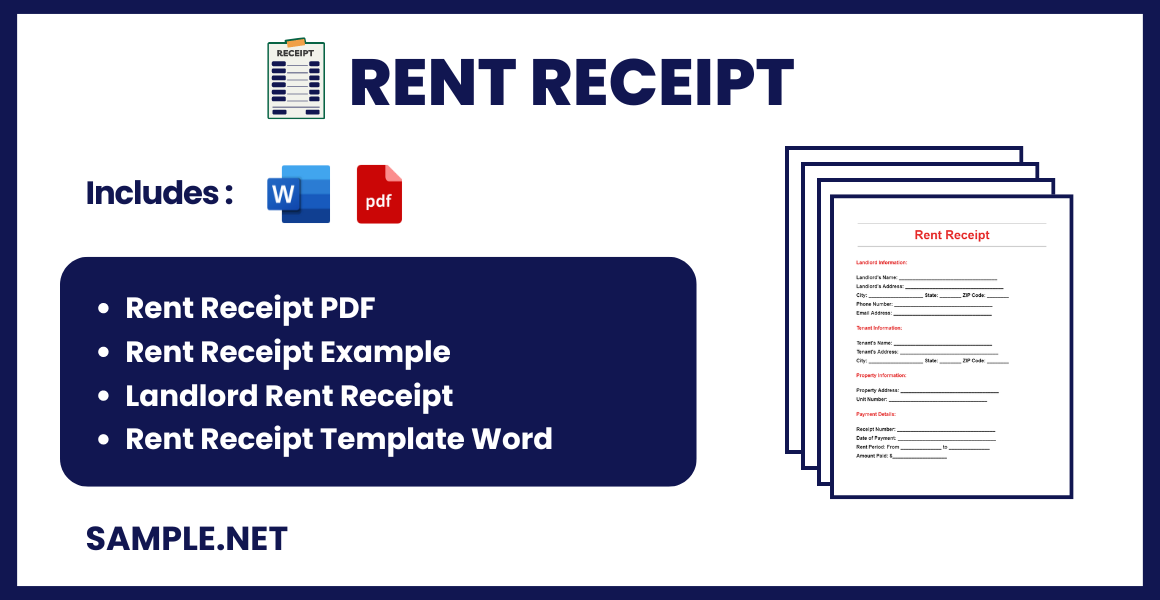
Rent Receipt Format
Heading
Rent Receipt
Landlord Information
[Landlord’s Name]
[Landlord’s Address]
[City, State, ZIP Code]
[Phone Number]
[Email Address]
Receipt Information
Receipt Number: [Unique Receipt Number]
Date: [Date of Payment]
Tenant Information
[Tenant’s Name]
[Tenant’s Address]
[City, State, ZIP Code]
Payment Details
Amount Paid: $[Amount]
Payment Method: [Cash/Check/Credit Card/Other]
Rent Period: [Start Date] to [End Date]
Property Information
Property Address: [Rental Property Address]
Unit Number: [Unit Number, if applicable]
Signature
Landlord’s Signature: ____________________
Date: [Date]
Acknowledgment
I, [Tenant’s Name], have paid the above-mentioned amount for the rent period specified.
What Is a Rent Receipt?
A rent receipt is an item used to document that payments made by tenants to their landlord. This is quite helpful to both for a variety of reasons. For tenants, this will prove that they were able to pay their rent on time. For landlords, it helps keep track of both incoming payments and any bounced checks or late payments. It is worth remembering that a rent receipt is the only proof of payment for those who pay in cash. All of these would be reason enough for both tenants and landlords to save their own copies of the receipts.
To give you a clue regarding how prevalent the use of these documents are, you need only to look at the overall statistics involving rental properties. According to Statista, up to twenty-seven percent of United States citizens are renting homes. On the sobering side of things, it is estimated from the same source that up to forty-three percent of non-homeowners are unable to afford their own homes, thus necessitating the need for rental properties. As a matter of fact, Pew Research Center event states that more people are renting now than at any other point over the past fifty years. If you are presently a tenant or a landlord, then it is vital to get to know rental receipts now more than ever.

The Elements of a Rent Receipt
Every rent receipt is going to have certain elements present. If you are going to create this document for your own purposes, then it helps to familiarize yourself with them. Below are the elements needed for a qualified rent receipt, complete with a short description of each one.
How to Write a Rent Receipt
With knowledge of the elements now ingrained within you, now comes the part where we detail the actual steps needed in order to put those together and create an official rent receipt. The following instructions are guaranteed to be general and simple enough for anyone to follow, ensuring an easy and quick experience.
Step 1: Choose the Right Template
The first step that needs to be done would be to choose a rent receipt template that matches the one you’ve got in mind. Going for a template is the right beginning for a multitude of reasons. One, you do not have to do everything yourself; as a matter of fact, there’s no need to even start from scratch. Two, even if you do not download an actual template, you can at least find a source of reference for your own receipt. Once this is done, you may proceed to another important consideration.
Step 2: Choose the Right Program to Edit the Template on
Those who opted to start from scratch may skip this step entirely. This step will focus on the programs that you can edit your chosen template on. Know that there are many to choose from, with prominent examples being Microsoft Word, Adobe Photoshop, Excel, and others. Chances are, there are already pre-existing formats for each template available to you. All you’ve got to do is make a decision, then download the right format before opening up the right program for your needs.
Step 3: Specify the Tenant and the Amount Paid
In this step, we begin the actual editing/writing process in earnest. Two of the most important details to include in your rent receipt would be the name of the tenant and how much money was paid to you on a specific payment period. Be sure to write down the tenant’s complete legal name and be as specific and accurate as you can be regarding the payment. For documentation purposes, these are two things you cannot afford to neglect or be wrong about. In the event that there are rent increases, be sure to first send a rent increase letter to the tenant.
Step 4: Specify the Address of the Premises
The next detail to occupy yourself with would have to be the address of the rental property itself. Again, the significance of this lies in the rent receipt’s use as a documentation item. Write down or edit the specific address before proceeding to other details, such as the date the receipt is being issued and what the receipt number is.
Step 5: Specify What Method of Payment was Used
Just as important as the amount would have to be the payment method employed by the tenant. There are more than a few reasons why this is necessary. For example, you have multiple tenants renting out multiple properties. Out of all of them, one has opted to pay rent via cash. Whereas the others have other means of documentation plans (such as online receipts or banking receipts), cash payments mean that the rent receipt created and kept by the landlord is the only actual proof that rent was paid in full and on time. Therefore, it is necessary for you to specify the method on the receipt itself.
Step 6: Enter the Other Important Details
With those out of the way, you can finish things up by entering all the other details that are needed. This will include your own address, your contact number, the tenant’s contact number, the name of the person who received the payment (in the event that you yourself did not receive it directly or personally), and more. At the end of it would be the landlord’s signature. Affix it at the bottom part of the document to make it all official.
Step 7: Make Sure to Double Check Everything Before Printing
Now that you have completed all of the previous steps, one of the last things that you need to accomplish is to double-check everything that’s been written so far. Check not just for the usual typos or inaccurate typing, but also for anything misleading that could cause problems down the line. After determining that everything is fine, you may proceed to do the only thing that’s left to do with a printable document like this: print it out. Alternatively, you can also send a digital copy to your tenant or do both, which will make sure that you and the tenant have multiple copies of the rent receipt.
The Dos and Don’ts of a Rent Receipt
A rent receipt can be similar to various other documents—both related and unrelated to real estate receipt and business. There are going to be lists of dos and don’ts associated with it to help guide its users away from the many pitfalls and towards success and security. For this type of item, it is better to look into what tenants and landlords alike can do to make sure they are in the most advantageous positions possible. Browse through this list and see for yourself what these things are.
Dos
Do keep in mind what your state or county requires concerning rental receipts.
Depending on where you live, the laws regarding the requirement of rental receipts may vary. Some may not even mandate landlords to provide them in the first place. The first ‘do’ that you need to keep in mind would be to learn as much as you can about your local or state laws. This takes precedence because of the potential consequences of your action plan and inaction.
Do make sure that you keep your copy of the receipt in a safe place.
Besides any requirements from the state, the primary function of receipts is to serve as documentation and proof of the payments made by the tenant to his or her landlord. For both parties, it is essential to keep copies of the receipts somewhere safe. You never know when disputes may arise. Be safer than sorry and prepare for worst-case scenarios by having your own records of the receipts received/prepared by you over the years.
Do not neglect the receipt number.
Perhaps one of the more overlooked elements of a rent receipt would be the receipt number. This is what landlords and tenants can use to keep track of how many payments have been made—and to an extent, how many receipts have been issued. This will only make the documentation and tracking process much easier since it adds to what the “date issued” element already brings to the table. Make things easier for yourself and do not neglect this even once.
Do make sure that nothing is inaccurate or neglected concerning the receipt’s elements.
Again, this is a “do” that applies to both the tenant and the landlord. Considering the receipt’s use as a form of documentation, it isn’t difficult to see that accuracy is an absolutely important thing to secure. If there are any errors, whether discovered by you or pointed out by the other party, you need to rectify this as soon as you can. Just like the previous entry on this list, you may find yourself facing some kind of dispute or a worst-case scenario at some point. It is better to be prepared should that ever happen and accurate content is one way for you to do so.
Do provide a receipt as soon as possible once a particular payment has been made.
This is something that will serve as an important reminder for landlords. Once your tenants have made their latest payment, do not procrastinate. Write up the receipt immediately or as soon as you can. The demands of one’s day-to-day life can understandably interfere with the speed in which you can provide certain documents, but by putting it off, you run the risk of eventually forgetting or failing to give your tenant with the receipt needed. Prioritize this and minimize the chances of either of you getting into trouble.
Don’ts
Do not provide receipts if the tenant has yet to make a payment for a particular period.
This first “don’t” is meant specifically for landlords. It is a simple reminder that receipts must not be issued until the tenant has made an actual payment. Even if you have decided to download templates or create a format on your own, there is no specific information that you can use to fill it up with. No amount and no date should be written down until the payment has been given. If there are any issues, then it would be prudent for landlords to first send out a late rent notice.
Do not neglect to affix your signature or include your official stamp on the receipt.
To make something official, it is often necessary to leave behind a mark. For documents like a rental receipt, the landlord can either place his or her signature on the paper or, if representing a company, put the official stamp on it. This shows that it is properly authorized by somebody or by an entity that has that right. The purpose of proof and documentation would not be complete with this, so make sure that you do not forget to do this small but significant act.
Do not neglect any remaining balance when it comes to periodic payments.
This particular entry to the list of “don’ts” is going to pertain to a more long term perspective. It must be said that tenants cannot always provide the total sum of payment at every possible payment due date. For that reason, periodical payment agreements may be established between them and their landlords to make the financial burden much easier to bear. In the case of landlords, it is wise to keep a record of how much is left to be paid by the tenant so that it can be included in the rental receipts issued throughout the payment periods. Document everything and do not allow any scrap of information to slip through the cracks.
Do not accept any rental receipts from those who aren’t authorized.
A landlord can always choose to either collect the payment himself or herself, but in the event that it isn’t a viable option, then a representative can always do the collecting. For this particular “don’t,” it is important to remind tenants that the receiving of rental receipts should only be done when interacting with either the landlord or a chosen representative. Anything else would be a potentially dangerous scenario to involve one’s self in.
Do not be hesitant to request certain items to be included in the receipt.
As a tenant, it is important to take note on your own regarding what’s been paid for, how much, the manner in which it was done, and others. Although you can perhaps put your trust solely in the capable hands of your landlord, there are times when you should really make sure that everything is recorded the way it should be. During those times, do not hesitate to talk with your landlord and insist on having certain things included in the receipt. Any omitted item could spell trouble for you in the event of a rental dispute, so make sure you keep an eye out for anything that’s wrong with the document.
Do not wait for any inconsistencies and errors to be corrected.
This last bit is also aimed towards tenants. Once you receive your receipt, go over it immediately to see if everything has been done right. Look over the document and see if anything you’ve requested has been written, and if there are any errors, do not wait until the landlord or landlady has noticed it. It is advisable that you be proactive in settling such mistakes as soon as you come across them.
Even something as simple as a rent receipt template has a lot going on. It goes to show just how much work is put into these kinds of documents. Those who are in need of this can easily find the best samples online. Each template is printable and easy enough for anybody to edit. What’s important is that you get your details right so that you do not need to spend too much time in the creation of your own rental payment receipt.
How do I make a receipt for rent?
Making a receipt for rent involves documenting payment details to ensure clear record-keeping for both parties.
Steps to Make a Receipt for Rent
- Include Date of Payment: Clearly state the payment date.
- Specify Rent Amount: Mention the exact amount paid by the tenant.
- Detail the Rental Period: Note the period for which the rent is paid.
- Provide Tenant and Landlord Information: Include names and addresses of both parties.
- Add a Signature Line: Ensure both parties sign the receipt for validation, similar to a Taxi Receipt.
How to write a rent receipt for tenant pdf?
Creating a rent receipt for tenant PDF ensures digital accessibility and easy sharing.
Steps to Write a Rent Receipt for Tenant PDF
- Use a Template: Start with a pre-designed PDF template.
- Fill in Payment Details: Enter the date, amount, and rental period.
- Add Tenant and Landlord Information: Include names and contact details.
- Include Payment Method: Specify how the rent was paid (cash, check, etc.).
- Sign the Document: Ensure the receipt is signed by both parties, similar to a School Receipt.
Does a landlord have to give rent receipts in California?
In California, landlords must provide rent receipts if the tenant pays in cash or requests one.
Requirements for Providing Rent Receipts in California
- Legal Obligation: Landlords must give receipts for cash payments.
- Upon Request: Receipts must be given if requested by the tenant.
- Detailed Information: Receipts should include payment date, amount, and rental period.
- Documentation Proof: Receipts serve as proof of payment for both parties.
- Regular Practice: Issuing receipts regularly ensures transparency, much like a Hospital Bill Receipt.
What is legally required on a receipt?
A legally required receipt must include specific details to be valid and serve as proof of transaction.
Legal Requirements for a Valid Receipt
- Date of Transaction: Must include the transaction date.
- Amount Paid: Clearly state the payment amount.
- Description of Transaction: Include what the payment is for (e.g., rent).
- Names and Addresses: Include details of both payer and payee.
- Signatures: Both parties should sign to validate the receipt, similar to an Acknowledgement Receipt.
How to write a receipt for rent payment template?
A receipt for rent payment template simplifies the process of documenting rent transactions accurately.
Steps to Write a Rent Payment Receipt Template
- Header Information: Include “Rent Receipt” at the top.
- Payment Details: Date, amount, and rental period must be specified.
- Party Information: Include names and addresses of both tenant and landlord.
- Payment Method: Indicate how the payment was made.
- Signature Lines: Ensure space for both parties to sign, similar to a Monthly Rent Receipt.
- Include Date: Clearly mention the payment date.
- Specify Amount: State the exact amount paid.
- Describe Transaction: Mention what the payment is for.
- Party Information: Include names and addresses of both parties.
- Signatures: Ensure both parties sign the receipt, akin to a School Fee Receipt.
- Write the Date: Record the payment date.
- Specify the Amount: Clearly state the amount received.
- Detail the Rental Period: Note the period for which the rent is paid.
- Include Party Information: Fill in names and addresses of tenant and landlord.
- Sign the Receipt: Ensure both parties sign, similar to completing a Fee Receipt.
How to write a receipt for payment?
Writing a receipt for payment involves documenting transaction details to ensure clarity and transparency.
Steps to Write a Receipt for Payment
How to fill a rent receipt book?
Filling a rent receipt book ensures consistent and organized documentation of rent payments.
Steps to Fill a Rent Receipt Book
Can you hand write a rent receipt?
Yes, you can hand write a rent receipt as long as it includes essential details such as date, amount, tenant and landlord information, and signatures. This method is similar to writing a Sale Receipt.
What is a proof of payment receipt for rent?
A proof of payment receipt for rent documents the transaction between tenant and landlord, confirming the amount paid and the rental period. It acts as an Accommodation Receipt.
Should I get a receipt when I pay rent?
Yes, you should always get a receipt when you pay rent to ensure there is documented proof of your payment. This receipt serves as a Money Receipt.
Is a receipt legal proof of payment?
Yes, a receipt is legal proof of payment, detailing the transaction and confirming the amount paid, payer, and payee information. It functions similarly to a Donation Receipt.
Is it legal to collect cash rent without receipts in California?
No, in California, it is not legal to collect cash rent without providing receipts. Landlords must issue a Receipt Form for each cash payment received.
How to create a receipt online?
To create a receipt online, use a template or receipt generator. Fill in transaction details, download, and share. This process is useful for creating a Collection Receipt.
Are rent receipts required in BC?
Yes, rent receipts are required in BC if the tenant requests one. This helps document the payment, similar to a Security Deposit Receipt.
Proper documentation of rent payments is crucial for both tenants and landlords. Our article on Rent Receipt: Sample, Forms, Letters, Use provides detailed examples and templates to help you create accurate receipts. Using these receipts ensures clear communication and avoids disputes over payments. For Self Employee Receipt needs, our guide offers valuable insights into maintaining organized and professional records. Whether you’re managing personal rental transactions or handling multiple properties, our resources will assist you in keeping everything well-documented and hassle-free.

